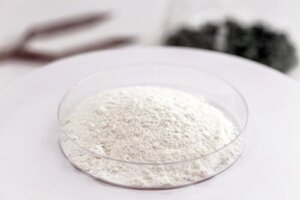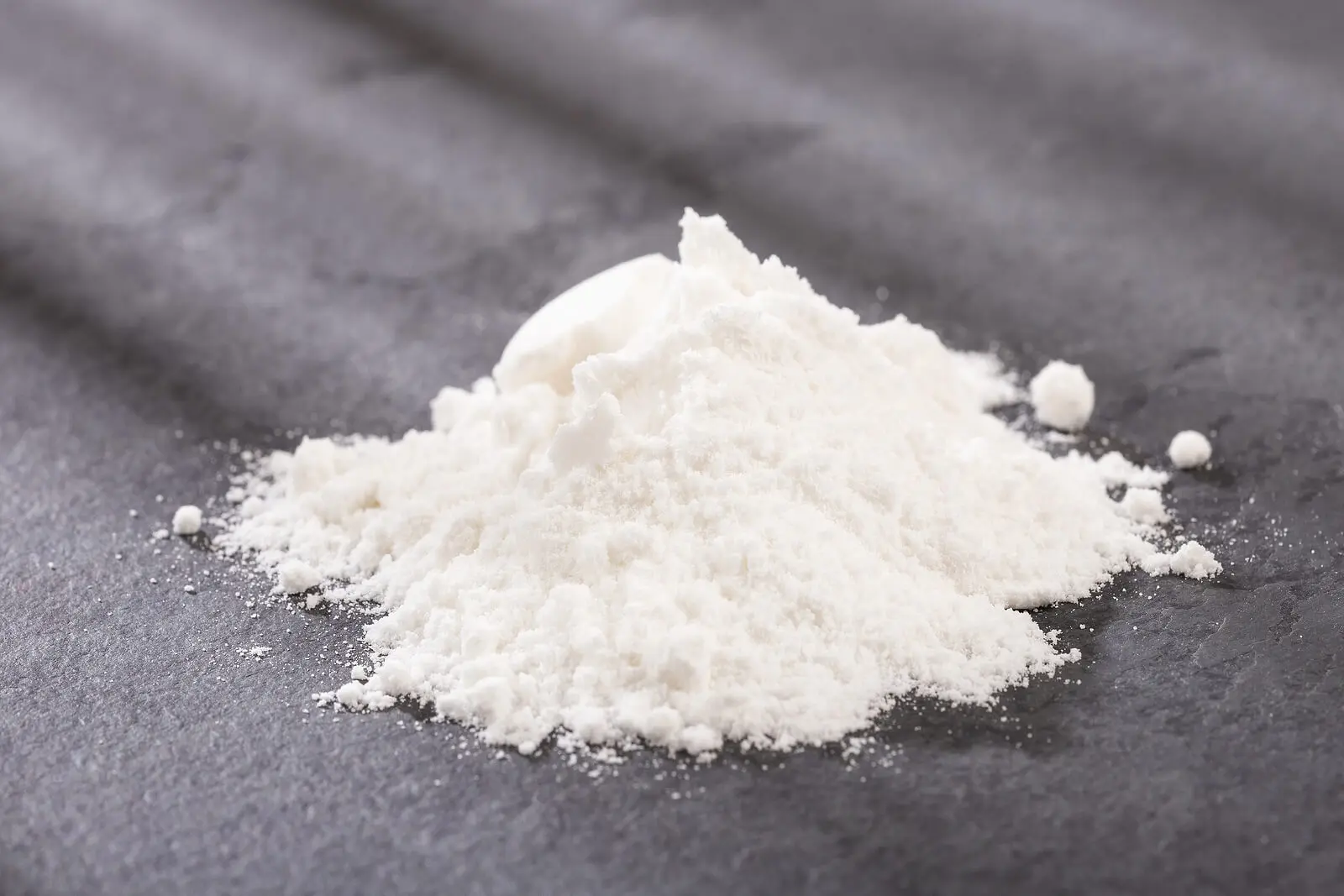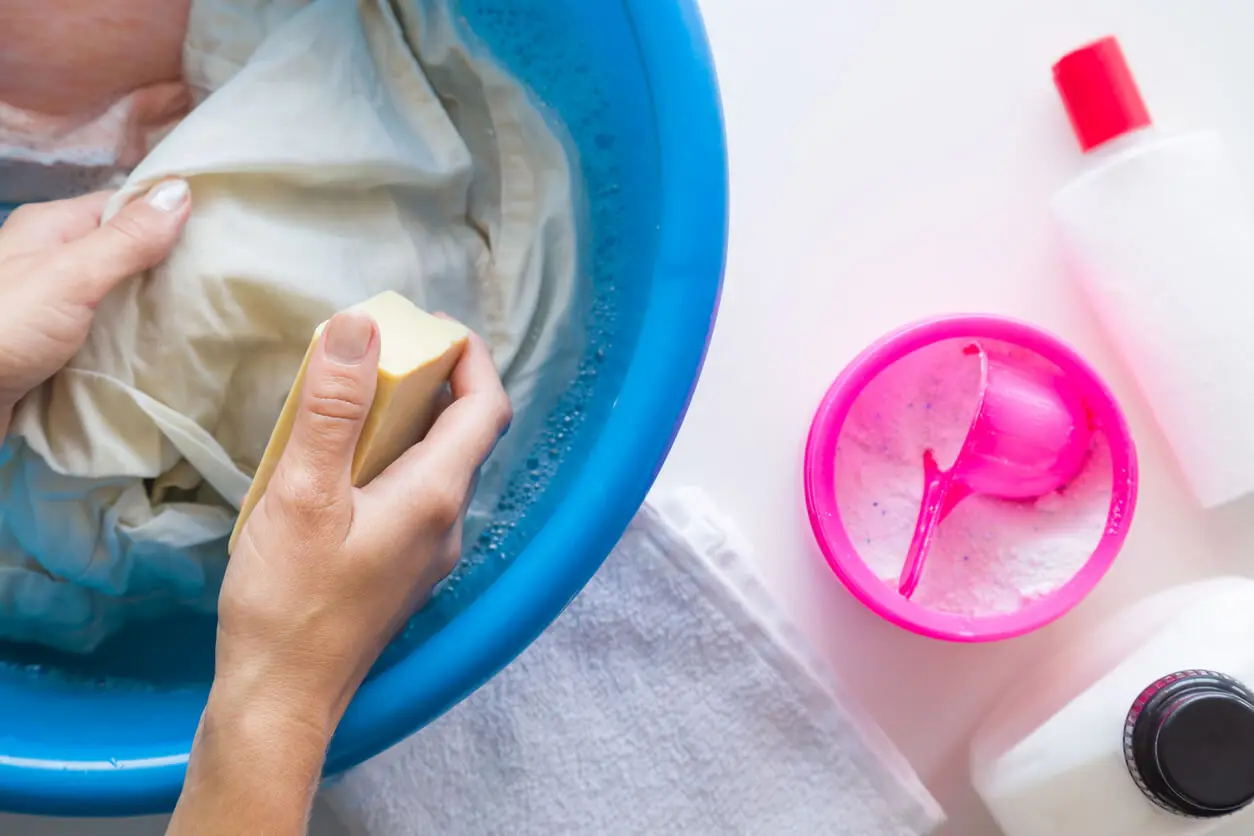Active Oxygen: What It Is and Its Uses for Household Cleaning


Reviewed and approved by the doctor Mariel Mendoza
Active oxygen is a product that has gained popularity for its applications in household cleaning. In particular, it is used to wash clothes, remove stains, and clean various surfaces, such as the bathroom. In addition, it’s said that it doesn’t affect our health and is environmentally friendly. But what exactly is it?
This product can be found right now in the market under different presentations. Some people prefer it for being a powerful “stain remover”, even in the face of difficult substances such as coffee, red wine, and tomato sauce, among others. In the following article, we’ll take a look at its main applications and how to use it.
Active oxygen: What is it and what is it for?
Active oxygen is the trade name of a chemical whose real name is “sodium percarbonate“. It’s also known as “solid hydrogen peroxide”, “sodium carbonate” or simply “SPC”.
It looks like a white powder. Once in contact with water, this compound reacts and releases oxygen. For this reason, it’s present in many laundry and cleaning products in general.
Among other things, it has wide application in industry, where it’s used in a variety of ways:
- Oxygenation agent in aquaculture.
- Wastewater treatment.
- Swimming pool cleaning.
- Disinfection of utensils in hospitals and restaurants.
- Paper pulp bleaching agent.
- As a colorant in the textile industry.
As mentioned, active oxygen is an ingredient that is already found in various products on the market. Still, there is the possibility of installing a dispenser at home, either in the washing machine or in a private faucet, for the water to be used when cleaning.

We think you may be interested in reading this, too: Alcohol, Newspaper, and 8 Other Glass Cleaning Tricks
How to use active oxygen?
Most products with active oxygen are used for laundry and household cleaning. Let’s take a look at how to use it in each particular case.
In the washing machine
Sodium percarbonate can be combined – perfectly and without major problems – with ordinary detergent. If it’s not already included in the product you use or have purchased, add the equivalent of one tablespoon in the water (approximately 25 grams), at the first moment of the washing cycle.
It’s recommended to wash with water at 35° C, although this will depend on the characteristics of the fiber and the color of the garments. Remember to check the recommendations on the labels, especially if you’re going to wash delicate clothes.
On the other hand, if you are using liquid detergent, first pour this product into the dispenser box of the washing machine or in the water, if this is the case. Then you add the percarbonate and, finally, you put the clothes in. In other words, avoid pouring the products directly on your clothes.
To remove stains
You can use active oxygen to remove stains from the clothes from the soaking. Follow these steps:
- Fill a bucket with four to five liters of water – enough to cover the garment.
- Add two tablespoons of detergent with active oxygen.
- If this comes separately, add one tablespoon of detergent and one tablespoon of sodium percarbonate.
- Stir well until dissolved.
- Soak the clothes for two hours.
- Wash as usual.
Note: For old or very stubborn stains (such as grease, chocolate, blood, etc.), you can soak overnight, or apply a percarbonate paste on the stain and rub a little with a toothbrush.
Like this article? You may also like to read: Homemade Cleaning Product to Remove Dust from Furniture
General cleaning
In homes, active oxygen is an alternative for cleaning various surfaces and objects. It can be applied diluted in the kitchen, even on pots and pans, as well as on bathroom faucets and tiles, glass, and floors in general.
It’s not recommended for use on wooden furniture, although it is recommended for plastic furniture and glass or metal tables.
Pool maintenance
Sodium percarbonate is also effective for maintaining swimming pools, even inflatable or removable ones. When oxygen is released, it interacts with organic matter.
It thus prevents microorganisms from proliferating and mold from forming on the walls. The recommended amount is between 120 and 250 grams per 10,000 liters, once a week.
Other uses of active oxygen
There are several uses for active oxygen in the home; in this sense, in addition to those already mentioned, we have:
- Deodorize plastic food containers.
- Disinfect dishes and kitchen utensils.
- Keep garbage containers clean.
- Clean pet dishes.
- Restore shine to metals.
The advantages and benefits
Active oxygen – alone or combined with a detergent – can be as or more effective than other powerful cleaners, such as chlorine bleach. Let’s take a look at its main benefits and advantages:
- Active oxygen reduces the risks of intoxication by bleach.
- It is less corrosive than this substance.
- It has a low impact on the environment.
- It allows for maintaining the color of your clothes.
- Active oxygen not only removes stains, but also odors.
- It helps to eliminate germs and bacteria from different surfaces.
- It doesn’t leave residues or produce bad odors.
Although it does not usually generate chemical reactions with other substances, it’s recommended to read the product label carefully if it’s to be used in combination with another cleaning agent.

What does the science say?
While it’s a solid, stable oxidant with low cost and little environmental impact, evidence indicates that the bactericidal effect of active oxygen is less effective than chlorine-based agents for disinfecting pipes and water sources.
Its effectiveness can be increased if copper chelated with methylglycinodiacetic acid (MGDA-Cu) is added.
In relation to water treatment, active oxygen, combined with vacuum ultraviolet (VUV) processes can inactivate the E. coli in tap water. Thus, its use can improve the removal of contaminants in water and on objects that affect people’s health.
For surface cleaning, research has found that the addition of sodium percarbonate removes traces of blood from clothes and carpets much more than using detergent alone.
Still, its effectiveness varies with wash water temperature, stain time, and stain exposure to various environmental conditions.
As for potential side effects, a 2014 report filed for the New Zealand Ministry of Health has classified sodium percarbonate as toxic by oral exposure route and irritating to ocular mucosa.
Precautions and recommendations for use
Whatever product is used for household cleaning or laundry, it’s good to take some precautions. Although no cases of skin allergies due to contact with active oxygen have been reported, it is always a good idea to wear gloves to avoid risks.
Also, other protective elements should be used, such as masks, glasses, and masks, in order to reduce the possibility of contact with the eyes or respiratory tract.
Likewise, it’s necessary to follow the instructions, both those of the manufacturer of the cleaning product and those found on the labels of the garments. If possible, a small test can be done beforehand.
Finally, although it is not considered toxic, this and all cleaning products should be kept out of reach of children and pets. And above all, it should not be ingested under any circumstances.
All cited sources were thoroughly reviewed by our team to ensure their quality, reliability, currency, and validity. The bibliography of this article was considered reliable and of academic or scientific accuracy.
- National Center for Biotechnology Information (2023). PubChem Compound Summary for CID 159762, Sodium percarbonate. Retrieved January 10, 2023 from https://pubchem.ncbi.nlm.nih.gov/compound/Sodium-percarbonate.
- Huang J, Puyang C, Guo H. Sodium Percarbonate Activation by Plasma-Generated Ozone for Catalytic Degradation of Dye Wastewater: Role of Active Species and Degradation Process. Catalysts. 2022; 12(7):681. https://doi.org/10.3390/catal12070681
- McKillop A, Sanderson W. Sodium perborate and sodium percarbonate: Cheap, safe and versatile oxidising agents for organic synthesis. Tetrahedron. 1995; 51(22): 6145-6166.
- Urara I, Iwahito T, Katsumi S, Kazuaki Y. 2-[Bis(carboxymethyl)amino] propanoic acid-Chelated Copper Chelate Enhances Bacterial Elimination by Sodium Percarbonate. 2021; 26(1):9-15. https://doi.org/10.4265/bio.26.9
- Cressey P, Pattis I. Health risk assessment: dishwasher powder. Prepared as part of a Ministry of Health. 2014. Disponible en: https://www.esr.cri.nz/assets/HEALTH-CONTENT/MoH-reports/FW14027-Dishwasher-powder-FINAL-Sept-2014.pdf.
- Mileto D, Mancon A, Staurenghi F, Rizzo A, et al. Inactivation of SARS-CoV-2 in the Liquid Phase: Are Aqueous Hydrogen Peroxide and Sodium Percarbonate Efficient Decontamination Agents? 2021; 28(4): 260 – 267. doi: 10.1021/acs.chas.0c00095
- Oldfield C, Morgan R, Miles H, French J. The efficacy of luminol in detecting bloodstains that have been washed with sodium percarbonate and exposed to environmental conditions. Australian Journal of Forensic Sciences. 2018; 50(4): 345-354. DOI: 10.1080/00450618.2016.1264478.
- Alam, M., Jagger, R., Vowles, R. and Moran, J. (2011), Comparative stain removal properties of four commercially available denture cleaning products: an in vitro study. International Journal of Dental Hygiene, 9: 37-42. https://doi.org/10.1111/j.1601-5037.2009.00432.x
This text is provided for informational purposes only and does not replace consultation with a professional. If in doubt, consult your specialist.








